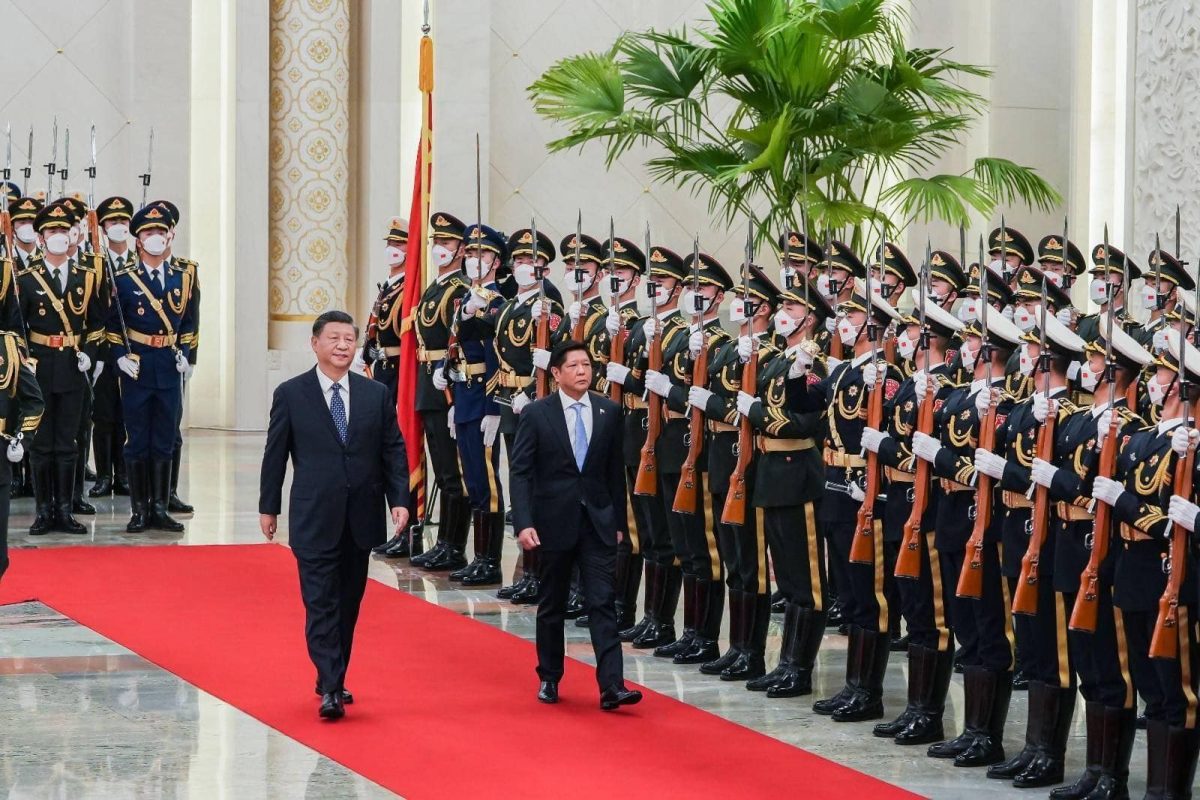It’s 2024, and global tensions are at their highest level since World War II. European countries are ramping up arms production, extremism around the world is rising, and in Asia, militaries are expanding and modernizing.
What is causing these tensions? Will they continue to grow? Is a global conflict on the horizon? Those are some of the questions considered in this series of articles. This piece will focus on tensions in Asia and their ramifications in the region and across the globe.
UNHEALING WOUNDS
Unlike Europe, Asia has been fraught with devastating conflict since the end of World War II, for a variety of different reasons, but mostly as a result of the global struggle between communism and capitalism. While active conflict was seen in a limited capacity in Europe and other regions, no region was as affected as Asia, being one of the hotspots for Cold War power politics and the setting of many proxy wars.
The Korean War was the first true manifestation of the conflict between capitalist and communist forces and led to the splitting of the Korean peninsula into two blocs of opposing economic and diplomatic theory.
The Chinese Civil War was also a battle between capitalist and communist forces, eventually resulting in a communist victory and a political split between the mainland and the island of Taiwan.
In the Vietnam War, the communist North Vietnamese drove out the combined forces of the Americans and South Vietnamese after a brutal quagmire of a war that lasted more than 20 years.
There were several other conflicts, such as ones between India and Pakistan, along with several communist insurgencies in Malaysia, Indonesia, and Myanmar.
RECOVERY
Despite multiple major conflicts, this period of instability wouldn’t last forever, as postcolonial societies began to gain their footing in the global community. Many external and internal disputes would be solved, and a period of peace arrived around after the end of the Vietnam War and the Cold War.
China under the communist regime would benefit from the peace, recovering after a series of disastrous Five-Year economic plans and the deterioration of relations with the Soviet Union.
China would take the chance to look for new allies, and the US was quick to take them in, establishing diplomatic relations in 1979. From then, US-China relations would flourish, as China adopted Western economic theories, and opened themselves up for trade.
After the collapse of the Soviet Union and the ensuing economic crisis in North Korea, South Korea would pursue a “Sunshine” Policy towards their communist neighbor. The two countries would engage heavily in trade, along with cooperation in the creation of infrastructure and increased diplomatic talks.
POWER POLITICS
After the brief period of peace, political changes in influential Asian countries would make stability in the region take a turn for the worse.
Xi Jinping’s rise and subsequent consolidation of power in China has led to a fundamental shift in regional politics. Compared to his predecessors, he has pursued a much more aggressive foreign policy.
China has re-established positive relations with Russia, especially since their annexation of Crimea in 2014, and serves as one of Russia’s few key allies. Both countries share a similar goal of curbing Western global influence; hence their involvement in BRICS, an economic alliance made to counter the Western global order.
With regards to Russia’s war in Ukraine, China has taken a more neutral position, preferring to not side too heavily with either nation. However, it is obvious that China continues to be a key economic and military ally for Russia in the Far East.
In recent years, China has also made their intention to invade and occupy Taiwan more apparent. This, along with their goal of resisting American influence in the Far East, has prompted China to invest heavily in the modernization of their military.
The extent of their modernization is clear and very concerning for the US and its allies in East Asia. Over the past couple years, China has quickly caught up to the West in terms of military technology and doctrine.
This has forced the US and their Pacific Allies—including Australia, Japan, South Korea, and Taiwan—to more carefully consider the possibility of conflict with China, leading to increased spending in each nation’s military.
In Taiwan, increasing Chinese incursions into their airspace have prompted further investment into the country’s defensive capabilities, which is still woefully inadequate for dealing with a potential Chinese invasion.
Although Taiwan has begun modernizing its own military capabilities, it still relies heavily on US and foreign assistance. Taiwan would not survive a Chinese invasion on their own, and it is up to the US and other regional powers to decide to defend it.
On the Korean Peninsula, after the abandonment of the “Sunshine” Policy, North-South relations have taken a rapid turn for the worse. North Korea has restarted and continues nuclear and missile tests, some of them landing within the Exclusive Economic Zone of neighboring countries like South Korea and Japan, promoting international condemnation.
The two Koreas have abandoned the Comprehensive Agreement Pact, which promised to de-escalate tensions. In addition, North Korea has announced that it believes peaceful unification is impossible, identifying South Korea as an enemy in their constitution.
In response to these missile tests, South Korea has been strengthening military ties to the US, conducting joint military exercises and housing a large contingent of US troops.
Concurrently, Japan has approved record military spending budgets, purchased American Tomahawk cruise missiles, and reinterpreted its constitution to allow their Self-Defense Forces to conduct more offensive operations.
THE FUTURE
The escalations in Asia are complex, with many having deep historical roots. A military strike by China or the DPRK in Korea, Taiwan, or Japan, or simple miscommunications between opposing forces can quickly drag the whole world into war, as a global web of alliances grinds into action.
Tensions between China and the US are leading to a small-scale arms race, as both sides work to develop military equipment more capable than the other. Worsening relations in Korea also marks a hotspot for conflict, as the Kim regime becomes more volatile.
This, combined with improving Chinese and North Korean relations with Russia, who is currently engaged in the war in Ukraine, makes the consequences of a regional blowout more severe, as the US would be forced to deter two similarly capable military competitors.


